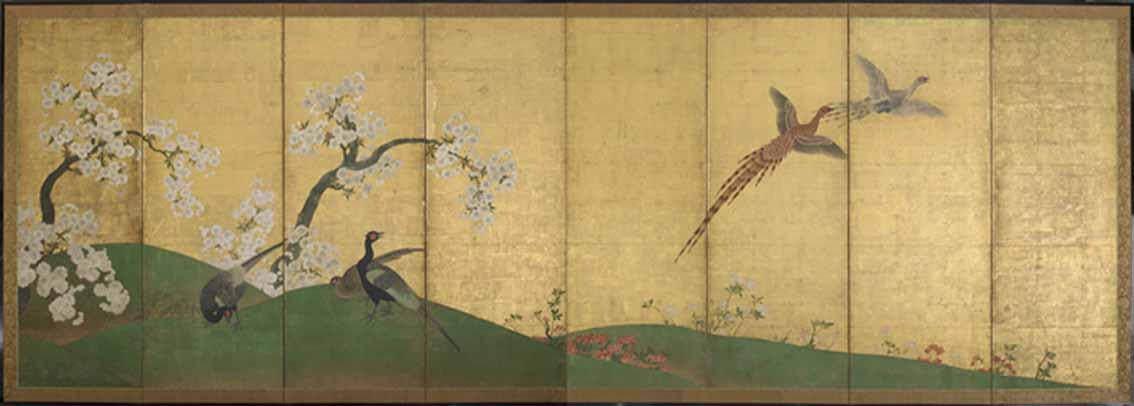Seasonal Landscapes in Japanese Screens is on show during the National Cherry Blossom Festival and on into late summer in Washington DC. This exhibition of screens touches upon the changing of the seasons, one of the most culturally important markers of time, regardless of culture. With just a few exceptions, most parts of the world have four seasons, some with very short springs and autumns, but four nevertheless and most early civilisations ordered themselves around them. Seasons bring not only changes in climate, but they can also bring about personal memories of people, places and events past. The subject can create many mental images and thoughts, almost all of which are truly personal. The Chinese and the Japanese were great aficionados of depicting the seasons and some of the screens in this exhibition, particularly the 16th- and 17th-century screens, display the painting techniques adopted and adapted from China, as well as the vibrant colours and gold of traditional Japanese painting, to create a new style and grand scale, which was favoured for residential and reception rooms.Three examples stand out the most in this subject-specific show, a bold, gold background, 17th-century screen with sakura in full blossom and great pines, a late Momoyama (1573-1615) screen of a flowering cherry trees and pheasants, also against a gold background, and a very rare pair of early 16th-century screens by the artist Genga. The latter are much more Chinese in feel with a red maple, flowering ground plants, pine and waterfowl at the edge of a lake with misted black ink mountains in the distance, much more three-dimensional that most. All-in-all, the exhibition promises to be a relaxing treat for both eye and mind.
On 11 April, one of DC’s largest spectator events, the Cherry Blossom Festival parade runs for 10 blocks along iconic Constitution Avenue. Giant colourful helium balloons, elaborate floats, marching bands from across the country, celebrity entertainers, and performers burst down the parade route in a grand spectacle of music and showmanship seen only once a year during the Festival. The steps of the National Archives serve as an exciting performance backdrop, and vibrant costumes and blossom-inspired décor create the look of nation’s premier springtime parade.
MARTIN BARNES LORBER
Seasonal Landscape in Japanese Screens runs until 6 September at the Freer Sackler Galleries, Washington DC, www.asia.si.edu





